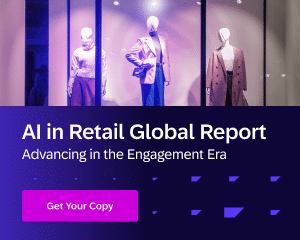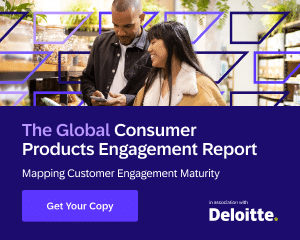As humans, we’ve learned the basics of progressive profiling through social interactions.
Say you go to a party (a nice party with shrimp cocktails and imported cheese). While you enjoy the fancy appetizers, the host introduces you to someone. You find out that her name is Barbara, and she’s a freelance web designer. A month later, you meet Barbara again at a dinner gathering, where you learn that she’s a vegetarian and lives on the north side of the city. The next time you meet Barbara, you have a great conversation and ask to exchange social media profiles to keep in touch.
Progressive profiling is a lot like that… just with more marketing and technology involved.
As a marketer, you need to understand the strategy behind progressive profiling. Read on for more details along with progressive profiling best practices that can help you build positive relationships with your customers and increase your overall customer lifetime value.
What Is Progressive Profiling?
To effectively market to your customers, you need to understand who they are. Armed with detailed information, you’re better able to serve up the brand experiences that will capture their interests and drive engagements. To make this happen you need to build profiles of individual customers that include relevant and helpful data for your marketing efforts.
But (and here’s the catch) consumers still feel ambivalent about how brands are using their data in advertising and marketing. According to a report by eMarketer, 50% of internet users say personalization helps them discover more interests, but 44% say that it feels invasive. Your customers really enjoy personalization (they expect it, and it leads to repeat purchases), but they also enjoy their privacy. Not only that, but having too many fields on one form lowers conversion rates 一 either due to data privacy concerns or simply because it’s too many questions.
Progressive profiling is a method of collecting relevant information from your customers gradually, as you keep them engaged over time, rather than asking for too much data all at once.
When you use a smart, automated engagement platform, progressive profiling helps to reduce friction. After you capture an answer to a question, it’s important not to ask again. If you ask customers the same questions repeatedly, they’ll become annoyed and increasingly less cooperative. Fortunately, smart progressive profiling forms will recognize whether a customer has already provided certain data and will only ask relevant questions.
How Can Progressive Profiling Improve Customer Loyalty?
The biggest way that progressive profiling improves customer loyalty is by aiding with segmentation, which is key for personalization. By segmenting customers into groups 一 whether you divide them by their average order value, interest, or any other data point 一 you can automatically target them with more relevant campaigns, content, offers, and recommendations.
Remember Barbara from the start of this article? She’s your new fictional friend who’s a vegetarian. If you’re planning to attend an all-you-can-eat BBQ rib fest, are you going to invite Barbara? Of course not. She’s in the wrong segment. A strawberry festival, on the other hand, might appeal to her.
“I think in a lot of cases, a lot of brands forget about the relationship element. We are dealing with customers, with humans, that really want that relationship with the brand. And the first-party element is obviously really important to us. […] We have customers that have specific goals they want to reach, specific dietary requirements that they have, and that’s really important to us to find out. So we use techniques, […] progressive profiling, for instance. We ask questions via our website through automated communications. So a welcome program [is] obviously absolutely perfect for something like this, just to start that relationship and building that relationship with that customer by getting to know them more. And by doing so, […] we can provide the correct solution or the correct products to meet their goals. And I think that’s just the perfect way of using first-party data to create a positive experience and build a positive relationship for the future.”
Progressive profiling also helps with customer loyalty by allowing you to adapt and change right along with your customers. It’d certainly be nice if you could simply collect information once and be done, but what your customers love most today might become old news tomorrow.
“It’s easy to send out a questionnaire asking ‘what are your preferences,’ and a whole lot of firms have done that. But the reality is that, yes, you get the customer’s preference for the moment. But you don’t know… you cannot see [how] they are changing. And we’re not, like, steady: ‘I’m here. [These are] my preferences.’ So I can follow up when I’m doing the profiling from the downloads of the patterns I can follow. Are they suddenly going to be a crocheter instead of a knitter, or are they doing both, or have they shifted out to making baby patterns instead of the granny patterns, or something like that? So I think that it’s not a kind of a [manual] profiling. It’s actually using data to do the running profiling on our customers so they can go in and out of our segments. And then [we] can use these segments in our design newsletter. That is actually the journey we are on. Too, is that to use this, making segments, and then [we] use that to make more one-to-one communication and design newsletters. So it’s not one-size-fits-all.”
For all these reasons and more, progressive profiling is one of the top interests of marketing leaders 一 42% consider sophisticated targeting, profiling, and engagement to be an important initiative.
5 Best Practices for Progressive Profiling
If you’re ready to start deeping your relationships with customers through progressive profiling, be sure to apply these best practices:
#1. Pace yourself.
Sometimes a marketer’s first instinct is to ask for as much customer info as possible right away. However, asking too many questions right off the bat can send customers running to your competitors.
It’s called progressive profiling, not “bum rush” profiling.
Question quantity: Collecting the initial info may require a small handful of fields for name and general contact information. After that, you should plan to keep progressive profiling forms limited to 1–3 at a time. A single question is often ideal, especially if you can make it contextually relevant (such as a question about running habits that appears as an overlay on a sneaker display page).
Question frequency: Spread out your questions over the course of multiple engagements. If you ask a customer a question every time she clicks to a different page on your website, she’s going to get tired of the friction really fast. On the other hand, if you ask her questions only once per site visit, she’ll barely notice.
#2. Start broad and then get more specific with your questions.
Much like when getting to know a new friend, start by learning general knowledge before asking more personal questions.
Assume you have to earn the right to know a customer really well… because you do. You earn that privilege by demonstrating that you’re a good custodian of their information. By showing that you will use their information to their advantage (say, by recommending a product they love), you establish deeper trust and increase your opportunities for engagement and conversion.
With that trust comes a greater willingness to share more personal information that they might otherwise have preferred to keep private.
“The personalization percentage in the app is progressive. When you first entered the app, we don’t know much about you. So everything that we show to our customers is basically decided by us. But when you start browsing and spending more time with us, basically we start collecting that data and show you progressively personalized sections.”
#3. Align your questions to customer lifecycle stages.
According to the preceding two tips, you need to pace yourself and ask questions in a specific order. Sounds like a bit of a pain in the rear, right? Actually, it’s not that tough! All you need to do is make a plan for when you’ll ask questions throughout the customer lifecycle.
This part of the progressive profiling process can be enjoyable:
1. Grab some sticky notes.
2. Write each of your customer lifecycle stages on separate notes and place them in order on a bare wall.
Lifecycle stages will vary depending on your business, but common stages include Awareness, Interest, Active Buyer, Retention/Loyalty, Advocacy, Churn, and Inactive.
3. Write each of your profiling questions on separate notes and add them to the wall.
4. Read the questions in order and then rearrange them until you’re satisfied that the order makes sense and has a logical flow.
Agile marketing for the win!
#4. Pick your data like you pick your battles 一 wisely.
You can ask your customers a variety of questions to get to know them better… but ask yourself, which of the answers will actually be useful to your campaigns?
If you don’t really need a data point, don’t ask for it.
“So some brands try to go for collecting as much data as they possibly can, but it’s not necessarily actionable data, or they don’t have a plan on how they can use it. Our smartest partners and the ones that are seeing the most success with Jebbit typically think through, ‘what are the three most important data points that we can collect across as many consumers as possible,’ as opposed to ‘how much data can we get across as many people as possible?’ And I think a really great example that comes to life with another client of ours that I’m aware of who focused on collecting just three data points and saw a 38% increase in customer lifetime value from the users who they’d collected that declared data from. So I think, again, just comes down to customer value, making sure there’s something in it for them, and then being able to focus on quality of data and not necessarily quantity of data points.”
This is great general advice. Although for the purposes of progressive profiling and building a deeper personal relationship, just three data points likely won’t be enough, it’s important to be critical of the questions you draft.
After drafting any progressive profiling question, reread it and ask yourself:
- When I have this data, how will I take action on it?
- When I act on this data, how will it impact the business in terms of customer experience, customer lifetime value, and revenue?
If you can’t answer these tough-love questions, you aren’t quite ready to collect that data point.
#5. Create a consolidated, unified customer view that includes profiling data and more.
The data you collect from progressive profiling is great. It’s neat, tidy, useful, and (best of all) it’s first-party data.
But it’s also not the only kind of first-party data you’re collecting. Progressive profiling data should become part of your larger, unified customer profile, which includes everything you know, including browsing data, past purchase info, cross-channel interactions, subscription data, feedback, and more. A customer engagement platform allows you to map all of this data to a single source of truth and makes it easy to use that data to deliver 1:1 personalized customer experiences.
Combining all the data you collect into a single, unified customer profile makes your marketing more effective and helps drive customer loyalty.
Final Thoughts: Relationships Are about Trust and Respect
This article includes a lot of do’s and don’ts, but they all come down to how you build relationships with your customers. When you respect them, you don’t pry for data they don’t want to share. When you trust them to return to you, you don’t have to rush to ask questions all at once. And when you act as a good custodian for their data, they’ll give you trust and respect in return.
Trust and respect are the foundations of any relationship, along with common interests.
So get to know your customers little by little and enjoy the journey of discovery!
Handpicked Related Content:















